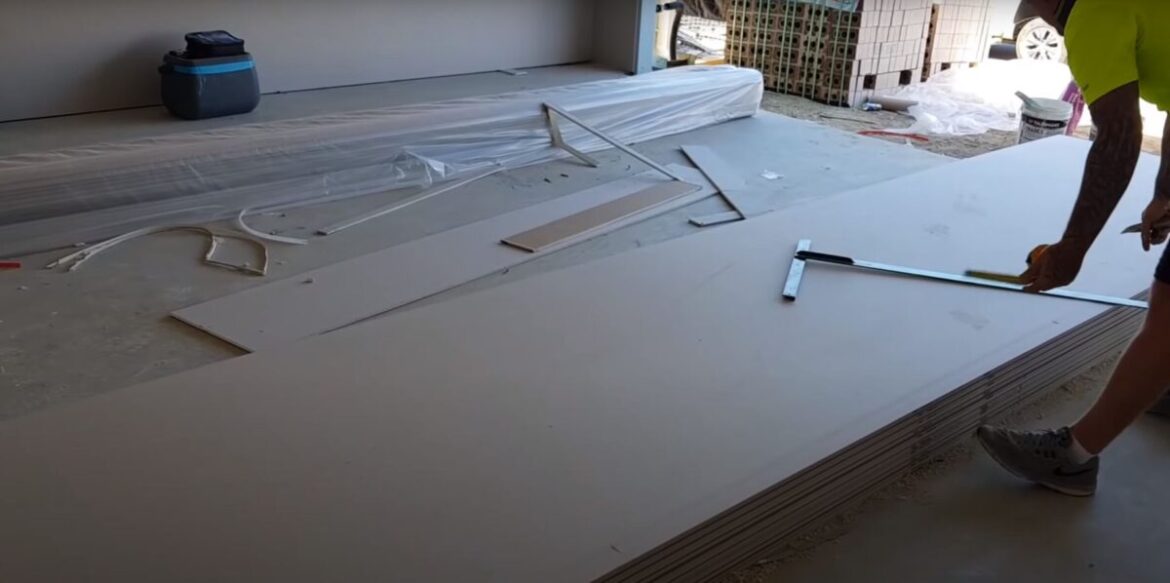What are the Different Types of Gib?
The Gib Spectrum: Navigating Your Options in Auckland
Understanding the Gib Landscape
If you’re embarking on a home renovation in Auckland and Gib fixing is on the cards, you’ll want to familiarise yourself with the array of Gib types available. Gib, commonly known as plasterboard or drywall in other parts of the world, comes in various types, each with its unique characteristics and uses.
Standard Gib Board: The All-Rounder
- Features: This is the most commonly used Gib. It’s grey paper-faced and is suitable for walls and ceilings.
- Advantages: Versatility and cost-effectiveness.
- Limitations: Not ideal for high moisture or high impact areas.
Gib Aqualine: The Moisture Magnet
- Features: This Gib has a blue paper face, specifically designed for wet areas like bathrooms and laundries.
- Advantages: Offers high moisture resistance.
- Limitations: Slightly more expensive than the standard board.
Gib Noiseline: Auckland’s Urban Shield
- Features: A high-density core makes this plasterboard ideal for reducing noise, especially in bustling Auckland suburbs.
- Advantages: Offers acoustic insulation.
- Limitations: Heavier than other types and might require additional framing support.
Gib Fyreline: Safety First
- Features: Built with a pink paper face, this Gib is developed for areas that need fire resistance.
- Advantages: Offers fire protection, especially important for kitchen areas or garages.
- Limitations: Costlier than standard Gib board.
Navigating Auckland’s Suburb Specificities
Given Auckland’s diverse neighbourhoods, your Gib fixing approach might vary. For instance, Albany, with its contemporary housing developments, might see a higher demand for Gib Noiseline, ensuring urban noises stay out. In contrast, in the scenic coastlines of Hobsonville, residents might opt for Gib Aqualine in their beachfront properties, given the moist environment.
Auckland Council Bylaws and Exterior Plastering
When it comes to exterior plastering or solid plastering, Auckland Council has specific regulations, especially concerning buildings’ weathertightness. In suburbs like Albany and Hobsonville, adherence to these codes is paramount to ensure the durability and safety of your Gib work. Always engage with a professional before embarking on significant plastering projects, ensuring compliance with local regulations.
The Gib Fixer’s Toolkit
Fixing Gib isn’t just about the board; it’s also about having the right tools:
- Broadknives: Essential for applying and smoothing joint compound.
- Taping Knife: Helps in taping the joints.
- Sanding Pads: For smoothing out the finished surface.
- Joint Compound: Often referred to as “mud”, it’s used to finish the joints and screw holes.
Decoding Gib Types: A Quick Table
| Gib Type | Advantages | Limitations | Best Use Cases |
| Standard Gib Board | Versatile, Cost-effective | Not for moist/impact areas | General walls/ceilings |
| Gib Aqualine | Moisture-resistant | Slightly costlier | Bathrooms/Laundries |
| Gib Noiseline | Acoustic insulation | Needs added support | Urban homes/offices |
| Gib Fireline | Fire-resistant | More expensive | Kitchens/Garages |
Engage the Professionals
As enticing as a DIY Gib project sounds, the intricacies involved — from selecting the appropriate type of board to ensuring accurate fixing and finishing — make this task more complex than it might appear at first glance. Engaging a professional Gib fixing contractor in Auckland not only ensures a seamless finish but also guarantees adherence to local bylaws and regulations, ultimately ensuring peace of mind in your home renovation journey. Get in touch with Your Plasterers Auckland today.
Unravelling GIB: Frequently Asked Questions
What is the standard Gib board used for?
The standard Gib board, with its grey paper-face, is versatile and commonly used for general walls and ceilings in homes and offices.
How is Gib Aqualine different from the standard board?
Gib Aqualine is designed specifically for wet areas such as bathrooms and laundries. Its blue paper face distinguishes it, and it offers high moisture resistance.
When should I consider using Gib Noiseline?
Gib Noiseline is ideal for places where noise insulation is crucial. If you’re located in bustling parts of Auckland or require soundproof rooms, this high-density plasterboard is your best bet.
What’s unique about Gib Fireline?
Gib Fireline is crafted for areas that require fire resistance. Its pink paper face stands out, and it’s especially suitable for kitchens, garages, or areas adjacent to fireplaces.
Is there a type of Gib for high-impact areas?
Yes, there are specific Gib boards designed for high-impact areas, like rumpus rooms or garages, which can withstand more wear and tear than standard boards.
How do I recognise which type of Gib has been used in my home?
Often, the colour of the paper face can indicate the type of Gib. For instance, standard Gib has grey paper, Aqualine is blue, and Fireline is pink.
Can I use Gib Aqualine for my entire home?
While you can, it might not be cost-effective. Gib Aqualine is designed specifically for wet areas. Using it throughout the house would be over-specification and could increase your costs unnecessarily.
How often should Gib be replaced?
Gib doesn’t have a specific “expiry date”. Its longevity depends on factors like moisture exposure, physical damage, or structural issues. Regular inspections can help gauge if replacement is required.
Is there an eco-friendly Gib option?
Yes, there are Gib boards available that are manufactured with sustainability in mind, using recycled materials and producing reduced carbon footprints.
How does Auckland’s climate impact my Gib choice?
Auckland’s varying climates, especially in coastal areas, can influence your Gib choice. For instance, properties near the sea might benefit more from moisture-resistant Gib due to the saline environment.
Are there any Auckland-specific regulations regarding Gib installation?
While there are building codes and regulations concerning plasterboard installation, it’s always recommended to check with local councils or engage a professional in Auckland to ensure full compliance, especially in areas like Albany and Hobsonville where specific bylaws might apply.

